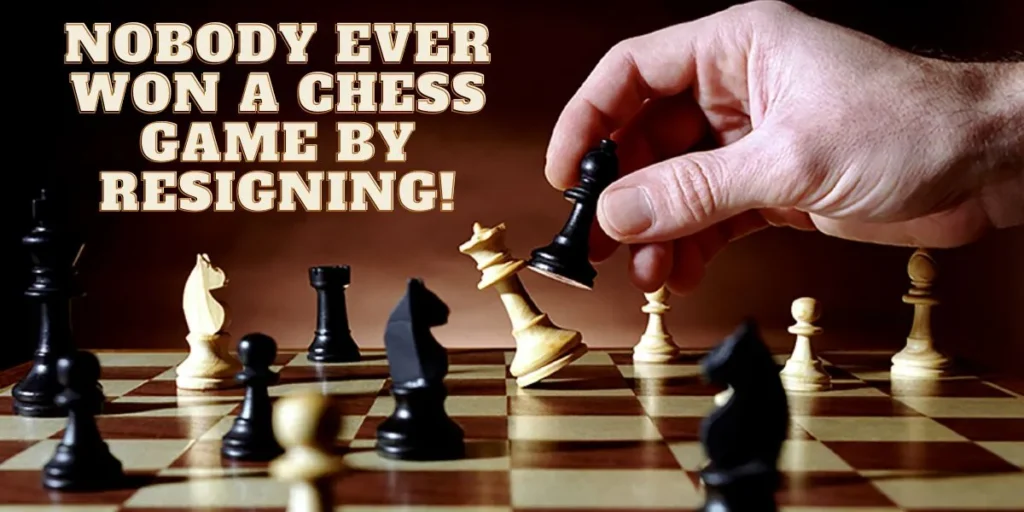To gain the upper hand on your opponent wrt material, positional advantage, or the game itself, chess traps let a player accomplish these goals. You can checkmate your opponent in less than 4 moves, chess traps are so deadly!
So, we collected the best chess traps in the games of chess with some beginner traps as well as advanced traps to give you the knowledge to execute them or defend yourself from one. But before that let’s understand the chess tricks and traps concept by answering these questions.
What are Chess Traps and Why Should You Use Them?
Chess traps are awesome moves in a chess game that excites the opponent to play a certain move that is devastating for its position. Or you can phrase it like a chess move with an ulterior motive that it lets the opponent see.
Chess traps simply destroy opponents’ positions in the quickest way possible. Even Grandmasters fall for traps, which means you must learn them to avoid them. Chess is a game of strategy and chess traps are a great strategy to win a chess game.
How to Set Up a Chess Trap: Tips and Techniques
You need to give attention to every little detail and find opportunities to plant your traps. You must have heard of Scholars mate, fools mate, or Légal trap but despite that, there are some small traps that beginners can use even in the middle of the game.
Trap a Bishop
If you are new at chess you must like capturing free pawns. That poor paws, aww. But it’s not always that helpless. You can get your bishop trapped for a free pawn.
Here, the bishop moved to A2 to capture a free pawn but got trapped by the pawn at B2. The bishop can not move and can easily be captured by a rook in a few moves. If the bishop tries to escape by taking the pawn at B2 the pawn at C2 will capture it and the white will still gain material advantage.
Forks
Fork is the name given to the move in which a chess piece threatens to take two pieces in a single move. Of course, the piece needs to be protected. Knights are experts in forks, so always find opportunities to do something like this.
The knight jumped into the black’s territory and forked the queen and the rook. Even if you save the queen you will still lose the rook’s enormous material advantage.
Stalemate
Yes, stalemate is a chess strategy, to draw a losing game is the best chess trap you can ever set. Read our other article for how to look for stalemates and how to avoid them.
We have a separate page to understand Stalemate In Chess: Understanding, Scenarios & How To Avoid. You can learn to use stalemate as a chess trap here.
Discovered Check
It is a move in which the opponent’s king comes under check but the piece moved doesn’t check itself. Try to use this move to gain a material advantage in your games.
The bishop moved to threaten the queen simultaneously opening the way for the rook to check the king. This is known as discovered check where you move a piece and the other piece discovers a check. It can be used to surprise your opponent and capture a piece while threatening the king with a check.
Pins
The name says it all, a move that pins one opponent player to its place in PIN. You can pin a chess piece to the opponent’s king or to another opponent’s piece which is more valuable to the piece pinned. In this case, the rook can not take the queen as it is pinned to the king by the bishop.
Now we are done with the chess traps for beginners, let’s move on to the chess opening trap and other traps to win a game. We define the best chess traps on the basis of how easily they can be executed and how much difficult is to spot them, not on the basis of how advanced they are. So let’s begin.
10 Chess Traps You Can Use to Win Your Next Game
These are the most popular and still hardest-to-spot chess traps that can do maximum damage ( Capture the opponent’s King ) in a few easy steps. Apply them in your games and have fun but be sure to avoid them if your opponent happens to know them too.
1. Scholar’s Mate (4-move checkmate)
It is an opening chess trap and among the fastest and most dangerous chess traps in beginner chess. You can checkmate your opponent in just 4 moves using scholars mate.
2. Fool’s Mate (2-move checkmate, fastest checkmate)
3. Queen’s Gambit Declined Trap
4. Blackburne Shilling Gambit
5. Fried Liver Attack
6. Légal Trap
7. Elephant Trap
8. Fishing Pole Trap
9. Traxler Counterattack
10. Venus fly trap chess
Common Mistakes to Avoid When Using Chess Traps
To avoid falling into a chess trap make sure you keep a close eye on the game and spot these common mistakes.
- Be aware of the possibilities of forks when the opponent knight has advanced to your terrain.
- Think a few moves ahead and evaluate the opponent’s blunders.
- Check for possible checks on King in the next few moves with the most tempting lines.
- Connect the dots and find the motive behind your opponent’s move.
- Keep an eye on bishops, rooks, and queens as they have long range.
Conclusion
Chess traps are the tools to use in a game not a strategy to follow. So keep in mind to use them as such and do not play the whole game depending on these chess traps. Keep your eye on openings and try to implant these traps in between. You can benefit from these traps if you are a beginner and have fun winning lots of games!




